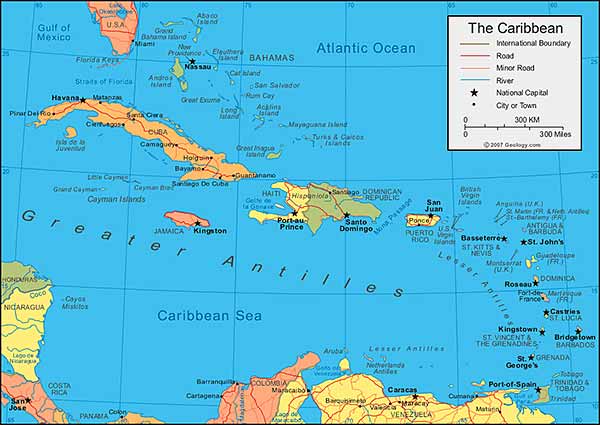19.07.2008
July 14, 2008 (the date of publication in Russian)
Alexei Baliyev
GEOPOLITICAL PIRACY IN THE CARIBBEAN
Washington and Bogota are reluctant to return the occupied territories to Nicaragua
 Recently, the International Court of the United Nations rejected the request of Nicaragua, concerning the status of the Corn Islands (Las Islas del Maiz) in the Caribbean. The hearings on the disputed islands, once seceded from Nicaragua, are postponed for an unidentified term. Today, control over the archipelago allows Washington and Bogota to control foreign trade of Nicaragua in the Caribbean Sea as well as to keep a bead on the Panama Canal.
Recently, the International Court of the United Nations rejected the request of Nicaragua, concerning the status of the Corn Islands (Las Islas del Maiz) in the Caribbean. The hearings on the disputed islands, once seceded from Nicaragua, are postponed for an unidentified term. Today, control over the archipelago allows Washington and Bogota to control foreign trade of Nicaragua in the Caribbean Sea as well as to keep a bead on the Panama Canal.
The decision of the International Court refers to the 1928 treaty which determined that the islands belong to Colombia. Meanwhile, the powers of Nicaragua remind Bogota about the historical context in which the treaty was signed.
At that time, the United States was seeking friendly relations with Colombia, and was committed to compensate Bogota the loss of Panama, seceded in the process of a separatist riot, inspired in Washington.
Meanwhile, Nicaragua was then actually a colony of the United States. As far back as in 1912, US Marines invaded in Nicaragua, forcing the government to sign an onerous treaty that provided Washington exclusive rights for construction of the canal, connecting the Atlantic with the Pacific. Later, Washington revised the idea of constructing an alternate of the Panama Canal, but the US troops were left in the country for the purpose of "protecting the interests of US companies".
In 1926, Augusto Cesar Sandino raised an insurrection against the occupying powers which was suppressed by Washington with unprecedented cruelty. For the first time ever, the United States used aviation against civilians. The town of Ocotal was bombarded by the US Air Force a decade before the air attack of the Nazi "Condor" squadron on Spain's Hernica.
In 1933, the Americans, after years of battles, were forced to withdraw troops from the country. However, a year later Sandino was killed, and Nicaragua fell under the rule of dictator Anastasio Somoza. His clan, characterized as "a son of a bitch but our son of a bitch", reigned in Nicaragua till 1979. Only in 1984, the Sandinist government raised the issue of the Corn Islands in the United Nations.
The government of Daniel Ortega regards the decision of the International Court as subjective and biased. The Sandinists are going to continue the struggle also for returning the isles of Albuquerque, Este-Sudeste, San Andres, Providencia, Santa Catalina, Roncador, Beacon Quay, and the shoals of Bajo Nuevo, Quita Sueno, Serrana and Serranilla.
Meanwhile, the United States had already used Roncador and Beacon Quay for deployment of surveillance and submarine-servicing facilities. The meaning of these territories and objects for Washington cannot be overestimated: they are located close to Venezuela and the Panama Canal.
From the legal standpoint, the rights of Nicaragua for Corn Isles are well substantiated. Therefore, Washington proposed to settle the issue by financial assistance to Managua. The negotiations on this issue continued until the return of the Sandinists to power in 2006.
At present, Nicaragua, Venezuela and Cuba are reportedly going to officially address the UN Committee on Decolonization on the subject of the "actually colonial status of many islands of the Caribbean".
Number of shows: 1447
rating:
3.3
 ENG
ENG 

 ENG
ENG 
